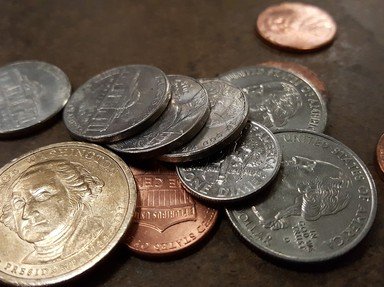Quiz Answer Key and Fun Facts
1. Of these four, which is the most valuable collector coin, not face value but value to a collector?
2. What was portrayed on the front of the so-called Buffalo nickel?
3. What quarter was minted for 15 years just before the Washington quarter was introduced?
4. What unusual but serious problem did collectors have with the "Buffalo" nickel and the Standing Liberty quarter?
5. When the United States stopped using silver in most of its coins, the 1000-count bags of silver dollars that had been sitting in the Treasury Dept.'s vaults were sold at face value to eager crowds of collectors and speculators. In what decade did this happen?
6. In World War II America, Lincoln cents with one particular date were very easy to spot in change. What was the date?
7. On Federal Reserve notes of the type just before the recent design change, names of cities, as well as letters and numbers that represented those cities, could be found on the $1 to $100 bills. What was the significance of these cities?
8. The series of bills which was discontinued in the late 1920s, the one previous to the design used for most of the 20th century, was much larger than the bills we're familiar with. Because of their size, many people called them by a certain nickname. What was it?
9. Today the largest denomination of paper money the US prints is the 100, but what was the largest denomination bill the US ever issued?
10. Which of these people was NOT a designer of one or more US coins?
Source: Author
mickeygreeneyes
This quiz was reviewed by FunTrivia editor
bloomsby before going online.
Any errors found in FunTrivia content are routinely corrected through our feedback system.


